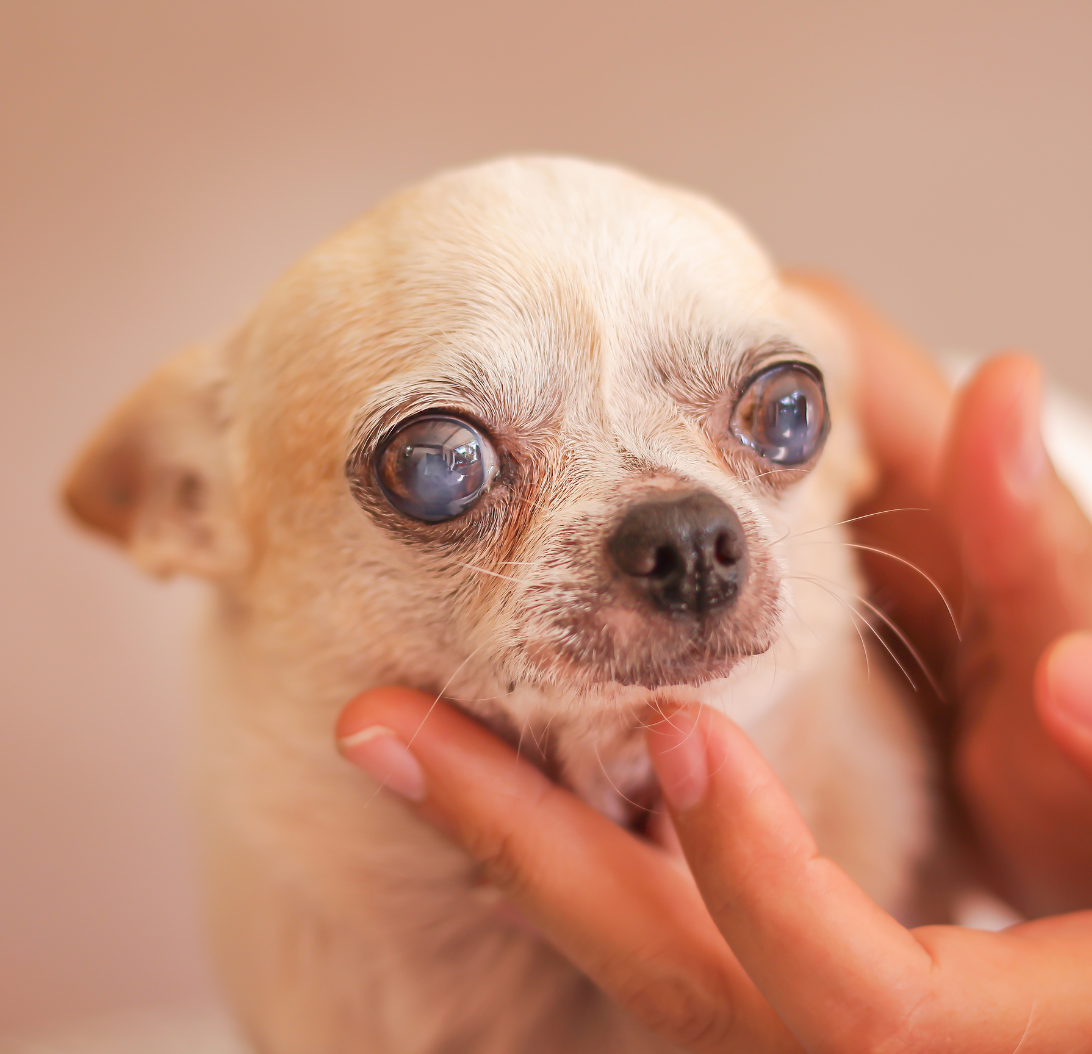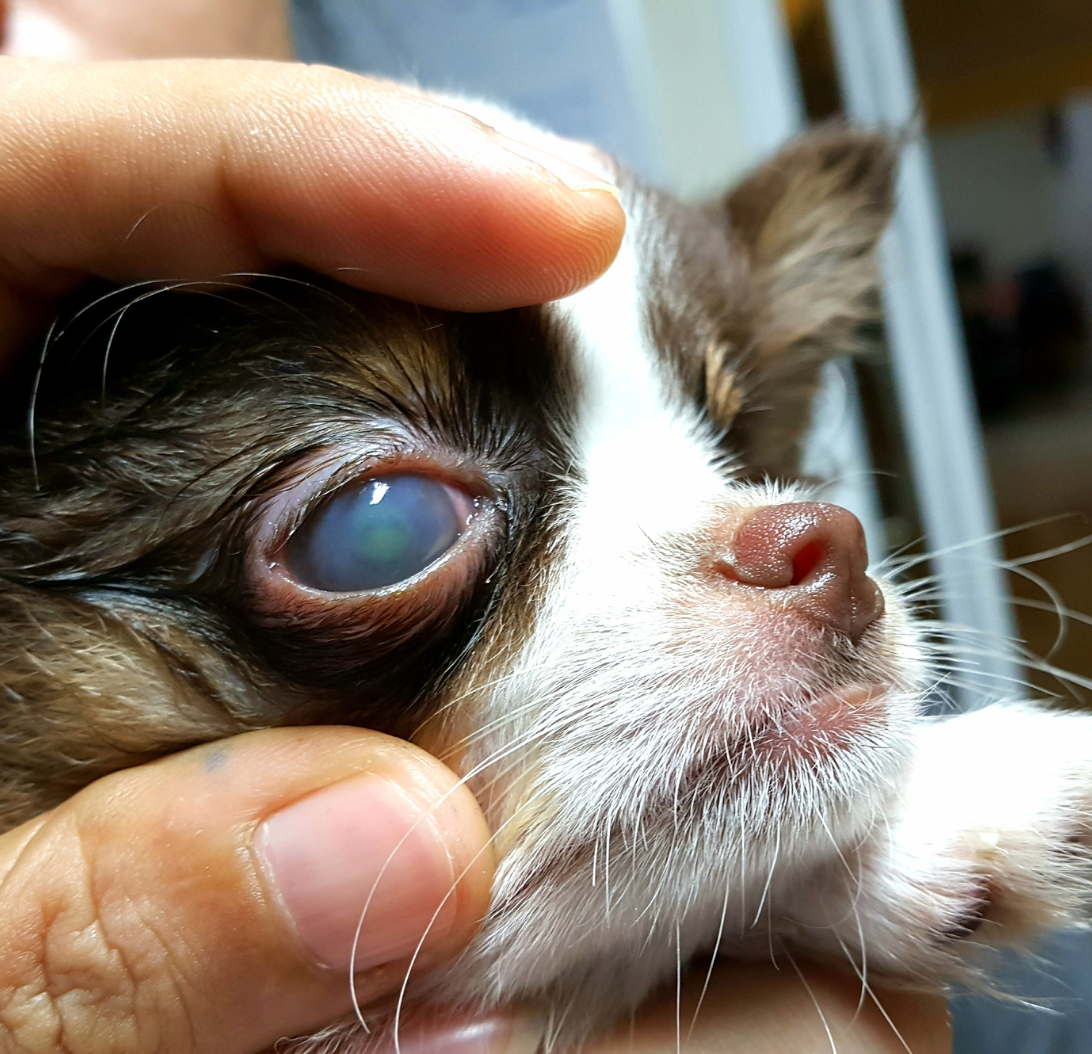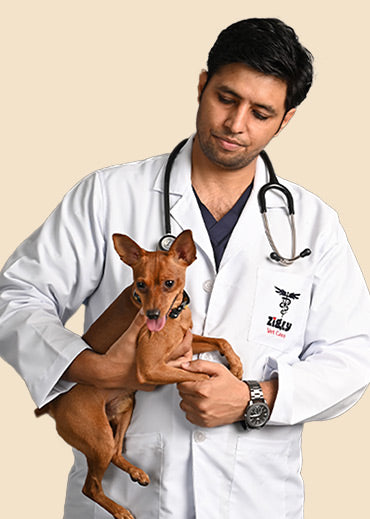Usually, a dog's eyes are so expressive that a single gaze can show excitement, sadness, and apprehension. Any condition affecting the eyes can be extremely stressful as well as traumatic for the pets as well as for the pet parents. Generally, eye conditions tend to worsen really quickly; that is why it becomes essential to recognize any such condition and seek veterinary advice in time. Ideally, the eyes of a healthy dog should be clear, bright, free from any dirt or discharge and inflammation. Here in this blog, we will be discussing common eye problems in dogs that are very likely to affect your dog once in its lifetime.
Conjunctivitis (Pink Eye)
One of the most common forms of eye problems in dogs. Conjunctivitis is a dog eye infection which means “inflammation of conjunctiva”. It is a delicate membrane lining the inner surface of the eyelid and the outer layer of the eye. This dog eye infection symptoms include redness, mucus in the eyes, watery discharge from the eyes. There can be a wide range of causes for conjunctivitis ranging from allergy, trauma, dry eyes, irritation to bacterial or viral infection. For treating conjunctivitis, correct diagnosis of what’s causing it is very, very critical. Depending upon the diagnosis, treatment can be right, from removing the irritants to using saline washes, antihistamines, or antibiotics to manage infections. In some of the cases, surgery might also be required.
Corneal Ulcers

Another common dog eye condition is a corneal ulcer. Corneal ulceration is defined as the breach in corneal epithelium, giving it a cloudy appearance. In case this breach goes down to further down layers of epithelium, it forms a descemetocele. Corneal ulceration is a dog eye infection that is more common amongst dog breeds with protruding eyes such as Shih Tzus, Pugs, Lhasa Apso etc. The cause for corneal ulcers is external trauma, which can be caused by sharp objects or rubbing eyes and face on the floor. Corneal ulcers are usually excruciating and tend to worsen even after treatment. This dog eye infection treatment involves topical broad-spectrum antibiotics or even surgery like corneal grafting and tarsorrhaphy in some cases.
Dry Eyes (KCS)
Moving further on, the list of eye problems in dogs is Keratoconjunctivitis sicca or ‘dry eyes’. It is a chronic inflammatory condition affecting the tear glands. In this condition, an adequate amount of tear production is not needed to keep the eye lubricated. As a result of this, the cornea and conjunctiva can become thickened, irritated or inflamed. If left untreated or undiagnosed, KCS can further aggravate painful corneal ulceration and impair vision. The cause for KCS in most cases are autoimmune disorders leading to inflammation in tear glands. Treatment usually includes topical application of topical eye lubricants. However, a veterinary examination is required for a definitive diagnosis.
Cataract

Amongst the most common eye problems with dogs is cataract. The presence of any opacity or cloudiness within the eye lens is referred to as a Cataract. Cataract interferes with the light reaching the retina leading to vision impairments. The dog eye infection symptoms of cataract are cloudiness in the eyes, vision impairment, permanent redness in the eyes, and even disorientation in some of the cases. Common reasons for cataracts include old age, trauma, nutritional deficiencies, diabetes and drug reactions. Generally, once initiated, there is no medical treatment to reverse the Cataract. Veterinarians, however, prescribe antioxidant eye drops to slow down the process. Surgery can be one of the options, but Ophthalmologists should first pre-evaluate the general condition of the eye.
Cherry Eye

Prolapse of the third eyelid gland or nictitans gland in dogs is also referred to as ‘Cherry eye’. It is one of the most prevalent eye problems in dogs. Cherry eye is a common eye condition usually seen in hyperactive puppies less than one year of age. A few breeds are predisposed for this, such as bulldogs, beagles, Shih Tzu and cocker spaniels. In this condition, prolapse of the third eyelid gland appears as an inflamed, red mass on the lower eyelid at the corner of the eye. This might also involve reduced tear production and excessive blinking. Causes of the cherry eye might include breed predisposition, age (hyperactive pups are more at risk), and any physical trauma to the eye. Usually, surgical replacement of the third eyelid gland is the first choice of treatment. However, chances of recurrence even after surgery are quite high. In some cases, Vets might also suggest a warm compress, anti-inflammatory eye drops, or simply letting the cherry eye be like that depending upon the situation.
FAQ
1. What are the most common eye problems in dogs?
The most common eye issues in dogs include conjunctivitis, corneal ulcers, dry eyes (KCS), cataracts, and cherry eye. Each condition has unique symptoms and may require specific treatment.
2. How can I tell if my dog has an eye infection?Minor irritation may be managed with vet-approved saline washes, but most dog eye problems—like ulcers or conjunctivitis—need veterinary diagnosis and treatment to avoid complications.
Yes, flat-faced breeds like Pugs, Shih Tzus, Bulldogs, and Cocker Spaniels are more prone to conditions like cherry eye and corneal ulcers due to their facial structure and exposed eyes.
If you notice redness, swelling, discharge, cloudiness, or your dog shows signs of pain or vision loss, consult your vet immediately. Eye conditions in dogs can worsen quickly without proper care.
Dogs are like our own babies. They need our care and attention to lead healthy life. A well-informed pet parent is less likely to ignore any concerning symptoms in their furry babies. These were the most common eye problems in dogs. Knowing about these situations helps pet parents watch out for any symptoms and prevents them from delaying medical aid. If you need any advice related to the health concerns of your fur baby, get in touch with our Pawsome People at Zigly, who are always just a woof away!












